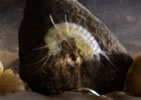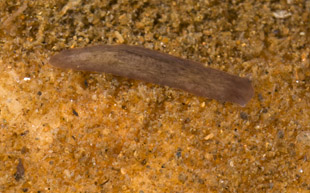 |
Cave Life of The Peak District |
 |
| |
| HOME |
| INTRODUCTION |
| LIFE IN THE ENTRANCE |
| LIFE IN THE CAVE |
| CONSERVATION |
| GLOSSARY |
| ACKNOWLEDGEMENTS |
| Bacteria |
| Fungi |
| Plants, Algae & Protozoans |
| Flatworms |
| Eelworms & Segmented Worms |
| Slugs & Snails |
| Crustacea |
| Insects |
| Spiders & Millipedes |
| Fish & Amphibians |
| Birds |
| Bats |
| Fossils and archeology |
Flatworms |
||||||||
Flatworms (Triclads – named after their triple branched gut) are simple white or brown flattened worms that move about their damp habitat by a series of undulations. Most flatworms are free-living in streams and pools, but many are parasitic. None feed on dead or decaying organic material. Although simple they have a bilateral nervous system and the head end of some species even has a rudimentary brain to integrate signals from eyespots. Some have the ability to continue to grow as two flatworms when cut in half - the bit that had the tail grows a new tail and its tail becomes the head. Flatworms need clean water with high levels of oxygen.
Crenobia alpina, 8-12mm, grey-coloured with two eyes is also found in Giants Hole. It is a characteristic species of cool, flowing water, and is found on the undersides of stones in small streams. It is less likely to be found in sluggish streams. C alpina feeds on oligochaetes, amphipods (e.g. Gammarus pulex), chironomids, Plecoptera (stonefly nymphs) and Trichopterans (caddisfly larvae).
Polycelis felina is more tolerant of warmer water than C. alpina. The two species appear to prefer different habitats, perhaps to avoid competition.
C. alpina and P. vitta are intolerant of summer temperatures and so prefer to live in caves and cool mountain streams, they are the species most likely to be encountered near the source of streams. They breed both sexually and asexually (by fission).
|
.jpg)
.jpg)
